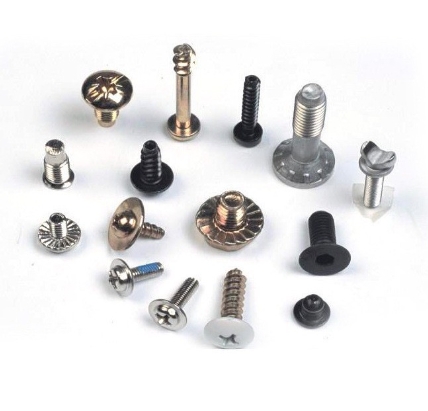Release time:2020-01-16 18:44 Browse:

In the precision field of manufacturing, CNC (computer numerical control) technology has become an integral part of modern processing production with its efficiency, precision and flexibility. Especially in the processing and customization of non-standard special-shaped screws and cold heading parts, CNC lathe has shown its unparalleled advantages. This paper will deeply discuss the machining process, technical characteristics, customization advantages and the application field of cold heading parts of CNC non-standard special screw lathe, in order to present a comprehensive and in-depth understanding for readers.
First, the application of CNC lathe in the processing of non-standard special-shaped screws
1.1 Precise control to achieve complex shapes
Through pre-programmed instructions, CNC lathe can precisely control the moving path of the tool, cutting speed, feed rate and other parameters, so as to realize the machining of non-standard special-shaped screws in complex shapes. Whether it is polygonal, with special threads, or with complex curved surfaces of the screw, CNC technology can easily deal with, to ensure machining accuracy and consistency.
1.2 Efficient production, improve production capacity
Compared with traditional manual or semi-automatic machining methods, CNC lathes can realize automatic production and greatly improve production efficiency. Once the program is set, the machine can operate continuously, reducing manual intervention and waiting time, and effectively increasing productivity. At the same time, due to the stability of the processing process, the rejection rate is also significantly reduced, further improving the economic benefits.
1.3 Flexible customization to meet individual needs
With the increasing diversification of market demand, the demand for non-standard shaped screws continues to increase. The flexibility of the CNC lathe allows it to be quickly adjusted according to the specific needs of the customer to achieve personalized customization. Whether it is size, shape, material or surface treatment, it can be flexibly changed according to requirements to meet the special needs of customers.
Second, cold heading processing technology and its advantages
2.1 Introduction to cold heading process
Cold heading is a process that uses a die to plastically deform a metal at room temperature. During the cold heading process, the metal blank undergoes a plastic flow under the extrusion of the die to form the desired shape and size. Because of its good mechanical properties, surface quality and production efficiency, cold heading parts have been widely used in fasteners, auto parts, electronic appliances and other fields.
2.2 Processing Advantages
- ** High material utilization rate ** : cold heading processing almost does not produce chips, the material utilization rate is as high as 90%, effectively reducing the cost of raw materials.
- ** Good mechanical properties ** : cold heading parts have experienced large plastic deformation during processing, and their tissues are denser and their mechanical properties are significantly improved.
- ** High production efficiency ** : cold heading machine can achieve high-speed, continuous production, greatly improving production efficiency.
- ** High dimensional accuracy ** : Due to the accuracy of the mold and the stability of the processing process, the dimensional accuracy and shape accuracy of the cold heading parts can reach a high level.
Third, CNC non-standard screw CNC lathe processing refrigeration header case analysis
Take an automobile factory as an example, the factory needs a special shape of non-standard shaped screws for the fastening of key engine components. Due to the complex shape of the screw, and the high precision and strength requirements, traditional processing methods are difficult to meet the needs. Therefore, the factory decided to use CNC lathe for machining customization.
In the process of processing, technicians first according to the drawing requirements, the use of CAD/CAM software for three-dimensional modeling and programming. Then, the program was imported into the CNC lathe for trial cutting and debugging. After many optimizations, stable and efficient processing and production were finally achieved. The non-standard shaped screws produced not only fully meet the design requirements, but also perform well in terms of strength and durability, and are highly recognized by customers.

